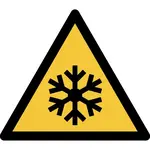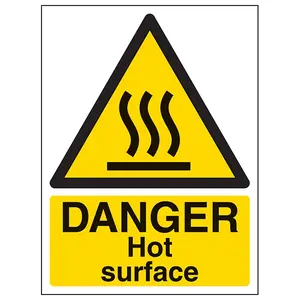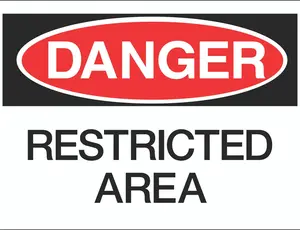A safety sign is a visual display used to convey important health and safety information to prevent accidents, injuries, or hazards in the workplace or public areas. These signs use standardized colors, shapes, symbols, and text to communicate specific messages clearly and quickly. Safety signs are essential for guiding behavior, warning of potential dangers, and indicating emergency exits, safety equipment, or prohibited actions, helping individuals stay informed and make safe decisions in their environment.
Safety signs can vary significantly from one country to another due to differences in regulations, cultural symbols, and language preferences. While many nations follow international standards like ISO 7010, others use their national guidelines. For example, the United States primarily follows OSHA and ANSI standards, which may differ in design or color coding from the European Union’s system.
In Japan, safety signs often include cartoon-like illustrations, while countries like Germany emphasize strict pictogram use. Language also influences signage—multilingual signs are common in regions with diverse populations. These variations highlight the importance of understanding local safety regulations when traveling or working internationally.
So let us talk about the major Safety Signs and Symbols with their meanings;
Safety Signs and Symbols with Meanings
1. Prohibition Sign:

A prohibition sign is a safety sign used in workplaces to clearly indicate that a specific action or behavior is not allowed. These signs are typically round with a red border, a white background, and a black symbol crossed by a red diagonal line. They help prevent unsafe actions and ensure compliance with safety rules.
Examples:
-
No Smoking – Displayed in areas with flammable materials.
-
No Entry for Unauthorized Persons – Used near restricted zones or hazardous areas.
-
Do Not Use Mobile Phones – Common in environments with sensitive equipment.
-
No Open Flames – Found in areas where combustible gases or liquids are present.
-
Do Not Operate Without Guards in Place – Used on machinery to prevent unsafe use.
2. Warning Signs

A Warning Sign is a type of safety sign used in the workplace to alert people to potential hazards or dangers that could cause harm if not avoided. It is designed to prompt caution and preventive action. Warning signs are usually yellow with a black border and feature a black symbol or text describing the specific risk.
Examples:
-
“Warning: Forklift Operating Area” – Alerts employees to the presence of moving forklifts to prevent collisions.
-
“Warning: High Voltage” – Notifies workers of the risk of electrical shock in certain equipment or panels.
-
“Warning: Slippery When Wet” – Indicates a floor area that becomes hazardous when wet, reducing the risk of slips and falls.
-
“Warning: Hot Surface” – Used near machinery or equipment that may cause burns if touched.
-
“Warning: Noise Hazard – Hearing Protection Required” – Warns workers that the area has high noise levels and hearing protection is necessary.
3. Mandatory sign

A Mandatory Sign is a safety sign that indicates an instruction that must be followed to ensure safety and compliance in the workplace. These signs are typically blue with white pictograms or text, and they tell workers what actions are required, not optional.
It instructs people to carry out a specific action for safety purposes, such as wearing protective equipment or following a designated procedure. Failure to comply with a mandatory sign can lead to accidents, injuries, or legal consequences.
Examples:
-
“Wear a Safety Helmet” – Seen on construction sites to ensure head protection.
-
“Hearing Protection Must Be Worn” – In high-noise areas like factories or workshops.
-
“Use Handrail” – At staircases or elevated walkways.
-
“Eye Protection Must Be Worn” – In laboratories or during welding and grinding.
-
“Forklift Trucks Must Be Operated by Authorized Personnel Only” – In warehouse or logistics environments.
4. Emergency sign
An emergency sign is a safety sign that provides clear instructions or guidance to help people safely respond during an emergency, such as evacuating a building, finding emergency equipment, or locating a safe area.
Examples:
-
“Emergency Exit” – Sign showing the direction to the nearest exit during a fire or evacuation.
-
“First Aid Station” – Sign indicating where to find medical supplies or assistance.
-
“Eyewash Station” – Sign pointing to the location of emergency eye rinse in case of chemical exposure.
-
“Assembly Point” – Sign showing the safe area where employees should gather after evacuation.
5. Flammable Sign

A flammable sign is a warning symbol used to indicate that the material, substance, or area it marks contains or involves items that can easily catch fire and ignite when exposed to heat, sparks, flames, or certain chemicals.
Examples:
-
Chemical Storage Rooms: Flammable signs are posted on doors or cabinets storing solvents, gasoline, ethanol, or acetone to alert workers of fire risk.
-
Paint Shops or Spray Booths: These areas display flammable signs because of the presence of aerosol sprays, paint thinners, and other ignitable substances.
-
Fuel Handling Areas: Flammable signs are used near fuel tanks, diesel drums, or gas cylinders to prevent smoking or open flames nearby.
-
Laboratories: Where alcohol burners or volatile chemicals are used, flammable signs warn lab staff to handle materials with caution.
6. Explosive Sign

An Explosive Sign is a safety warning symbol used to alert people that a substance, material, or area contains or may release explosive materials that could explode if exposed to heat, friction, shock, or a spark. It’s commonly displayed in workplaces to prevent accidents involving explosive chemicals or devices.
Examples:
-
Chemical Storage Rooms: A sign is placed on doors storing ammonium nitrate or organic peroxides, which are highly explosive under certain conditions.
-
Construction Sites: Near blasting zones where dynamite or other explosives are used for demolition or mining.
-
Manufacturing Plants: On containers with aerosol sprays, gunpowder, or pressurized gases that may explode when heated.
-
Laboratories: Where experiments involve volatile compounds or explosive reactions under high pressure or temperature.
7. Tripping Hazard Sign

A Tripping Hazard Sign is a safety sign used to warn people about areas where there is a risk of tripping and falling due to uneven surfaces, obstacles, cables, or other hazards on the floor. It helps prevent accidents by making workers and visitors aware of potential dangers so they can take caution.
Examples:
-
A sign is placed near a loose carpet edge or uneven floor tile.
-
A warning sign is placed where electrical cords or hoses cross walkways.
-
A sign alerting to cluttered or obstructed walkways with boxes or tools.
-
Notices near floor openings or steps without proper railings.
8. Toxic Material Sign

A Toxic Material Sign indicates the presence of hazardous chemicals or substances that can harm health through exposure. It alerts workers to take necessary precautions such as wearing protective gear, following handling procedures, and avoiding contact.
Examples:
-
A chemical storage room containing pesticides or industrial solvents is marked with a toxic material sign.
-
A laboratory where toxic reagents like mercury or cyanide are used.
-
Areas in manufacturing plants where harmful gases such as chlorine or ammonia are stored.
-
Waste disposal sites handling hazardous chemical waste.
9. Nose Mask Required Sign

A Nose Mask Required Sign is a safety sign that indicates wearing a nose mask (often part of a face mask or respirator) is mandatory in a specific area to protect against inhaling harmful dust, fumes, chemicals, or pathogens. It helps prevent respiratory hazards and ensures worker safety.
Examples:
-
In a construction site where dust from cutting or grinding is present.
-
In a chemical manufacturing plant handling hazardous fumes.
-
In a healthcare facility where infection control requires masks.
-
In a woodworking shop, to avoid inhaling sawdust.
10. Low Temperature Sign

A low-temperature sign is a safety warning sign used in workplaces to alert employees and visitors about areas or equipment that have dangerously cold surfaces or environments. These signs help prevent cold burns, frostbite, or other cold-related injuries by indicating hazards such as refrigerated rooms, cryogenic storage, or chilled tanks. For example, in a food processing plant, a Low Temperature Sign may be placed on cold storage doors or freezer units to warn workers to wear appropriate protective clothing.
11. Heated/Hot Surface Sign

A Heated/Hot Surface Sign is a safety warning sign that alerts workers to surfaces that become hot enough to cause burns or injuries upon contact. These signs are used to prevent accidental touch of machinery, pipes, ovens, or equipment that operate at high temperatures. For example, in a manufacturing plant, a heated surface sign might be placed on a furnace door or a steam pipe to warn employees to use protective gloves or avoid direct contact.
12. Eye and Eye Protection Required Sign

An Eye and Eye Protection Required Sign is a safety sign indicating that workers must wear protective eyewear, such as safety goggles or face shields, in the designated area to prevent eye injuries. This is common in workplaces with flying debris, chemicals, or intense light sources. For example, in manufacturing plants, construction sites, or laboratories, employees must wear eye protection when grinding metal, handling hazardous chemicals, or working with lasers.
13. Danger Sign

A “Danger” sign is a bold warning indicator featuring the word “Danger” in prominent letters, often accompanied by pictorial symbols. It signifies imminent hazards or threats in the area, urging individuals to exercise extreme caution. This visual cue is critical for preventing accidents and promoting safety by clearly communicating potential dangers within a given space.
14. High Voltage Sign

A high-voltage sign is a safety warning sign used to alert people to the presence of electrical equipment or areas where high-voltage electricity is present, which can cause serious injury or death if contacted. It is designed to warn workers and visitors to stay away or take necessary precautions.
Examples:
-
On electrical panels or switchboards in factories.
-
Near transformers or power distribution units.
-
Around construction sites with temporary high-voltage cables.
-
At substations or electrical rooms in office buildings or warehouses.
15. Emergency Exit Sign

An “Emergency Exit” sign features a running figure or arrow pointing to an exit, indicating the nearest escape route in case of emergencies. This visual cue is crucial for swiftly guiding individuals to safety during crises, emphasizing the importance of identifying and using designated emergency exits to ensure a quick and secure evacuation.
16. Emergency Assembly Point Sign

An “Emergency Assembly Point” sign typically displays a gathering of people or an arrow pointing to a designated area. It signals the predetermined location where individuals should convene after evacuating a building during an emergency. This visual guide ensures an organized and safe assembly, aiding emergency responders and facilitating headcounts for accountability.
17. No Smoking Sign

A “No Smoking” sign is a clear prohibition indicator, often featuring a crossed-out cigarette or pipe symbol. This visual cue communicates the strict ban on smoking in the designated area, promoting a smoke-free environment. It is essential for maintaining health, safety, and compliance with no-smoking policies in public spaces or workplaces.
18. First Aid Sign

A “First Aid” sign typically displays the universally recognized white cross on a green background, indicating the location of first aid facilities or equipment. This visual cue is crucial for swiftly guiding individuals to access immediate medical assistance during emergencies, promoting a prompt and organized response to injuries or health crises.
19. Fire Extinguisher Sign

A “Fire Extinguisher” sign typically features an image of a fire extinguisher, signaling its location. This visual indicator is essential for quickly directing individuals to firefighting equipment in case of emergencies. It promotes safety by ensuring that people can readily locate and use fire extinguishers to mitigate or control a fire hazard.
20. Restricted Area Sign

A “Restricted Area” sign typically features a combination of text and symbols, indicating limited access or entry authorization. This visual warning communicates that only authorized personnel are permitted beyond this point. It is crucial for maintaining security, privacy, and safety by clearly demarcating areas with restricted access or specific permissions.
21. Radioactive Sign

A “Radioactive” sign usually displays a trefoil symbol, indicating the presence of radioactive materials. This visual warning is crucial for alerting individuals to potential radiation hazards. It emphasizes the need for caution, protective measures, and adherence to safety protocols in areas where radioactive substances are present, minimizing the risk of exposure.
Conclusion
This blog post, “Safety Signs and Symbols with their Meanings,” has taken time to highlight these very important safety signs that you come across in your day-to-day activities in your workplace. The aim is to know these signs, understand why they are placed where they are, and the reaction expected from you.
We all have a part to play to ensure a safe workplace.
Related Posts
13 Reasons Why Traffic Signs Are Important
21 Very Important Road Signs And Their Meanings
What Are Warning Signs, How To Identify Them and Importance
What Are Mandatory Signs And How To Identify Them
Road Signs Test & Sample Questions For Preparation
A seasoned Health and Safety Consultant with over a decade of hands-on experience in Occupational Health and Safety, UBONG EDET brings unmatched expertise in health and safety management, hazard prevention, emergency response planning, and workplace risk control. With a strong passion for training and coaching, he has empowered professionals and organizations to build safer, more compliant work environments.
Certified in globally recognized programs including NEBOSH, ISO standards, and OSHA regulations, he combines technical know-how with practical strategies to drive health and safety excellence across industries. designing comprehensive HSE management systems or delivering impactful safety training, whether he] is committed to promoting a culture of safety and continuous improvement.
